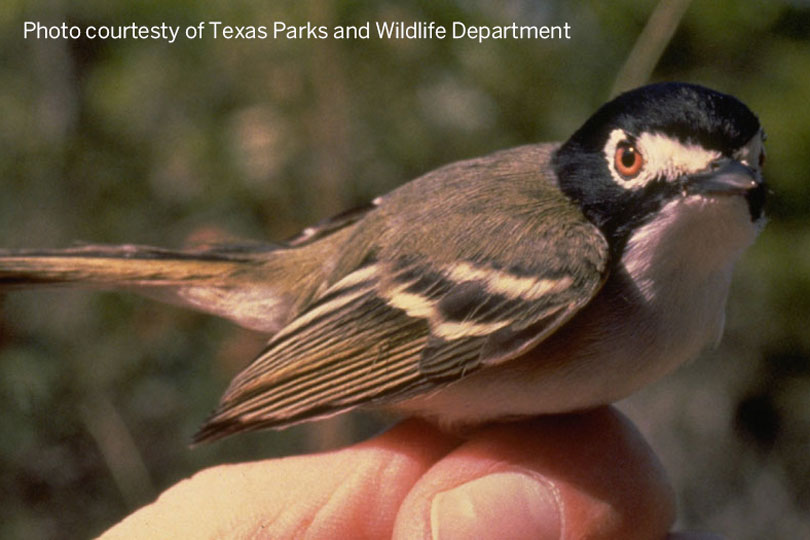By Jennifer Dorsett
Field Editor
Improved and sustainable populations of the black-capped vireo led officials to remove the bird from the endangered species list last month.
Several years ago, Texas Farm Bureau (TFB), along with the U.S. Fish and Wildlife Service (USFWS), the states of Texas and Oklahoma, the U.S. Army, private landowners and non-governmental organizations went to work to protect and help recover black-capped vireo populations, which were critically near extinction.
Thanks to these efforts, USFWS delisted the black-capped vireo from the endangered species list on April 13, 2018.
The black-capped vireo is a small songbird native to the Edwards Plateau and eastern Trans-Pecos regions of Texas.
The bird was listed as endangered in 1987.
At the time, several factors impacted the black-capped vireo’s population.
The bird’s preferred habitat, short shrubs such as shin oak or sumac, was being overgrazed by deer at that time, and naturally-occurring range fires that used to clear land and keep shrubs low-growing near the ground had been virtually eliminated by the late 1980s.
Nest parasitism by brown-headed cowbirds also affected the population. The cowbird will push vireo eggs out of a nest and lay its own in their place, leaving the unsuspecting vireo to incubate and hatch cowbirds instead of their own offspring.
Black-capped vireo populations at that time were critically low, with only an estimated 350 birds remaining in the wild.
TFB, along with several other organizations, took action.
Conservation efforts included prescribed burns to keep shrubbery at preferred vireo heights and trapping brown-headed cowbirds to reduce the overpopulation of that species.
TFB was instrumental in partnering organizations with landowners to gain access to private lands.
In 2012, when the population was no longer critically threatened, TFB and other groups petitioned USFWS and the U.S. Department of the Interior to down-list or delist the black-capped vireo.
The habitat for black-capped vireo is also prime habitat for whitetail deer, so private landowners were receptive to improving habitat because it was beneficial to both species.
The current population of the black-capped vireo is estimated at 14,000 birds, according to Texas Parks & Wildlife Department.
“The implementation of good conservation practices improved the status of this species and allowed this delisting,” TFB Commodity and Regulatory Activities Director Gene Richardson said. This is an example of how working with landowners can help conservation work well, while allowing for the recovery of an endangered or threatened species.
USFWS found the primary threats to the black-capped vireo have been reduced or adequately managed and populations are expected to be viable in the future.

